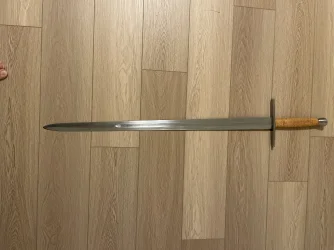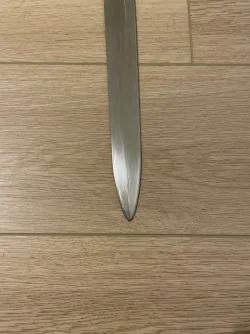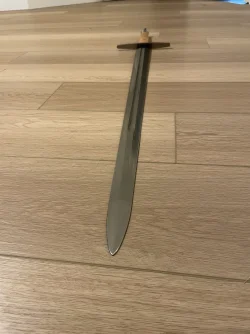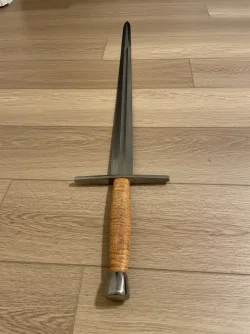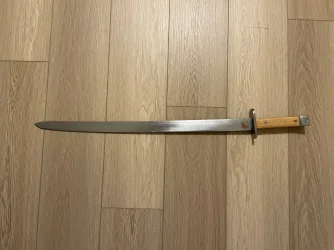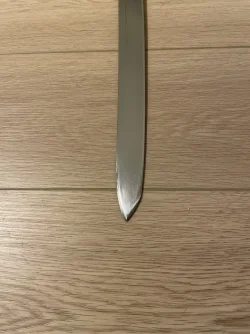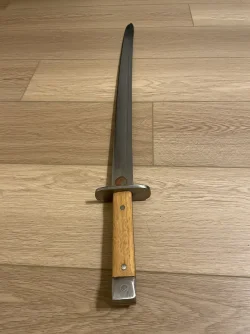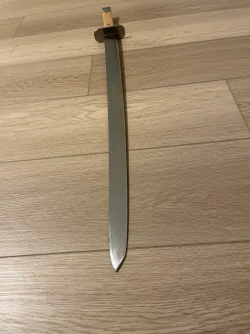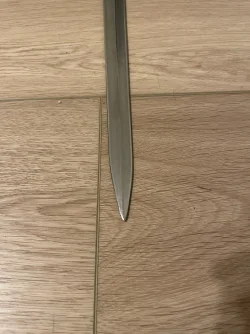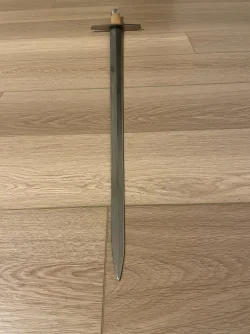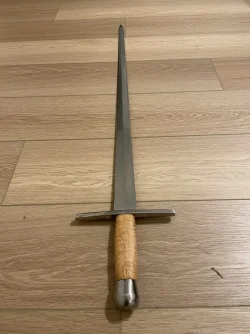I’m not sure what the definition of a small sword is. I don’t know much about the rapier, but my understanding is that it was designed to excel with the thrust with a narrow blade, but still had a sharp cutting edge.
Pictures from some of my own. I put the hilts on all three of these.
The first is a fairly classic longsword, with a distinct point for the thrust coupled with a fairly wide blade for cutting.
The second is a saber that I modified from a taiji saber, cutting off the tang and mounting the hilt on the bottom portion of the blade. The end result is a shorter weapon. However, it still has a distinct curve which makes for a better cutting weapon, coupled with a point that is sharpened on the back edge as well, improving the thrust. The point lines up fairly well (not perfectly) with the grip, which improves its thrusting quality vs. a more radically curved saber or scimitar where the point does not line up with the grip.
The third is what might be called an arming sword in European terms, but is one that I use in my Chinese jian practice. It is a straight-bladed single-hand sword. The blade overall is more narrow than the longsword and tapers more sharply which probably makes it better on the thrust than the longsword (ignoring the greater power that can be generated with the longsword by using it with two hands on the longer hilt), but probably makes it less effective on the cut than the wider blade on the longsword, and again ignoring the greater power generated by the two-handed grip.
Like anything, there is no universally “best” design for a sword. Each design has inherent strengths and weaknesses and may function better under some circumstances, and less well under others. But they can be very versatile and be easily deadly, even if not taking advantage of their strongest traits.
Sword designs changed in response to armor, which (at least in Europe) was being constantly improved to defeat the weapons of the day. As armor became more complete and moved towards plate, sword blade designs tended to become more narrow and sharply pointed, with thickened points for ruggedness, to penetrate that tough armor. Cutting techniques were less effective against such armor so sword design changed. But designs often kept cutting abilities too, didn’t discard them entirely, as your rapier example shows (although the era of the rapier came after the heavy armor was mostly discarded due to the rise of firearms).


